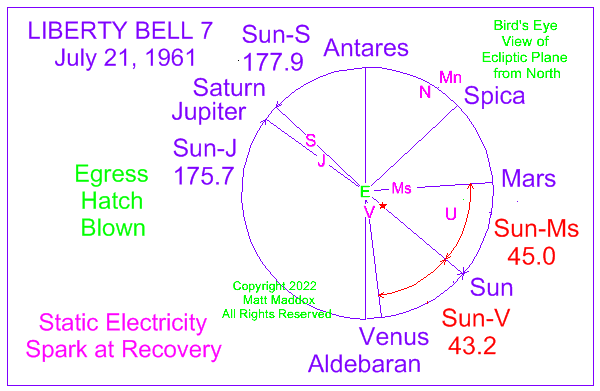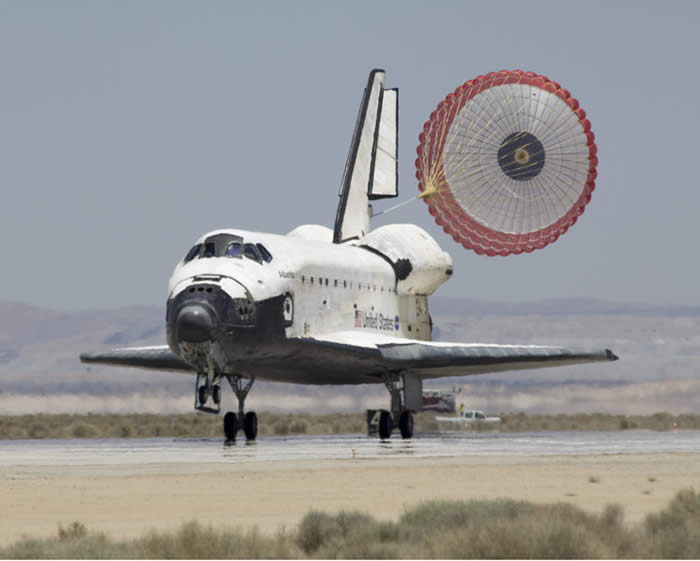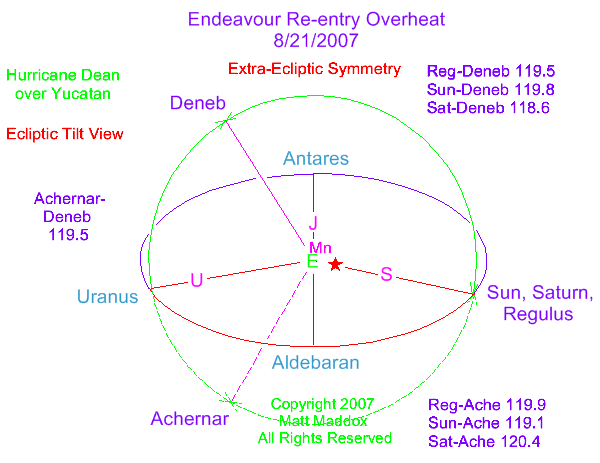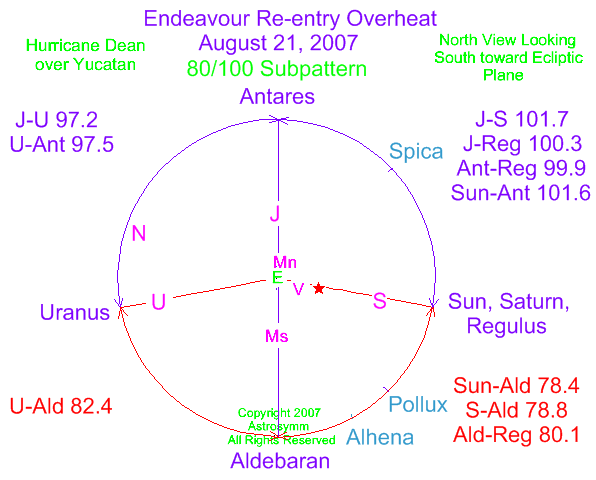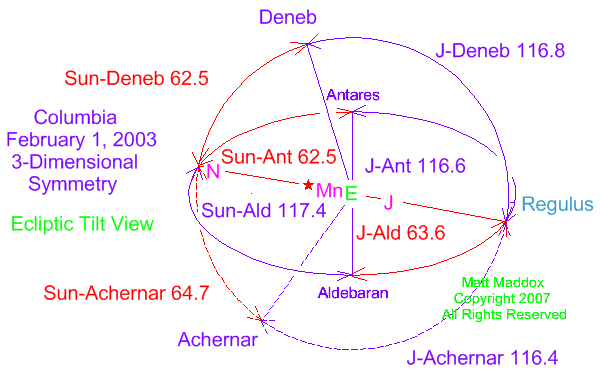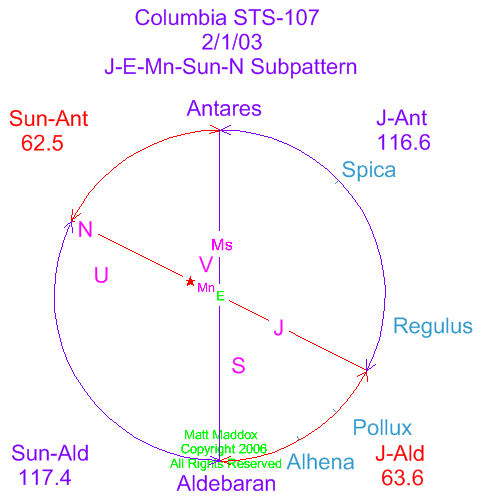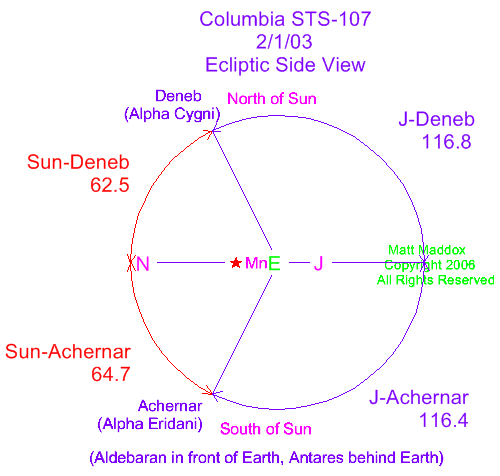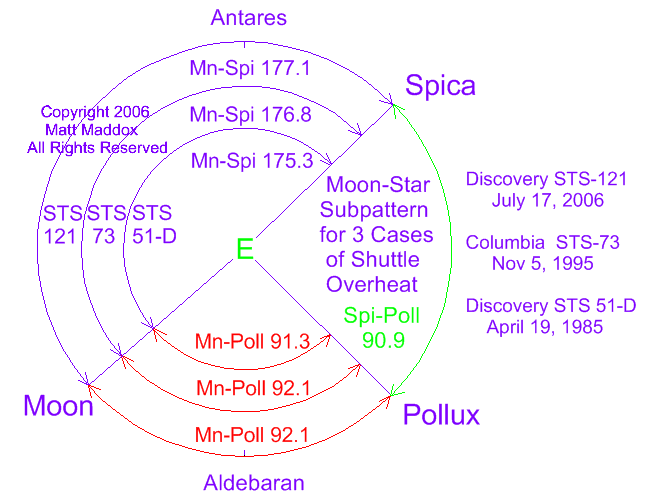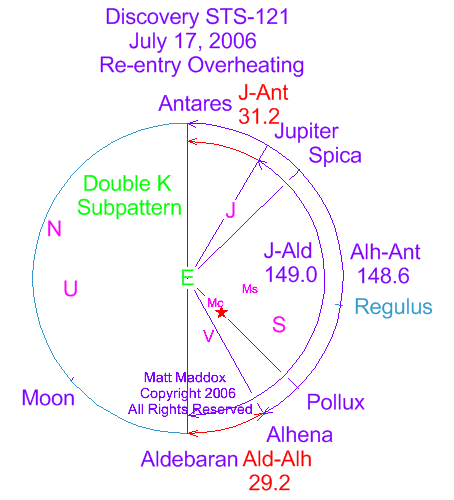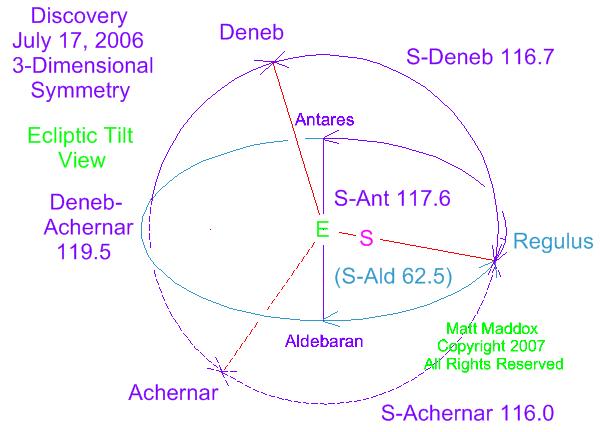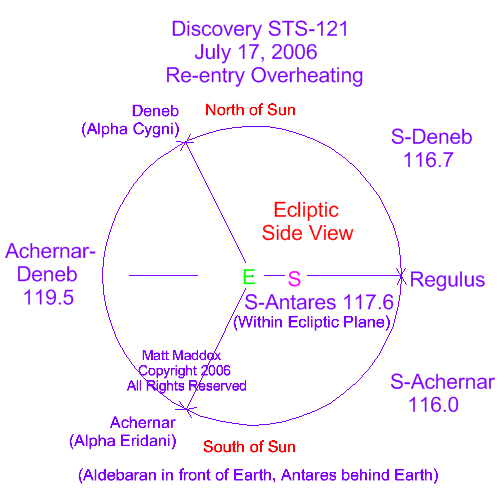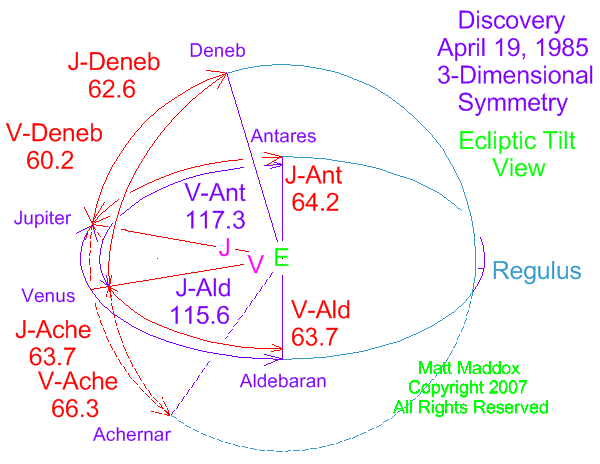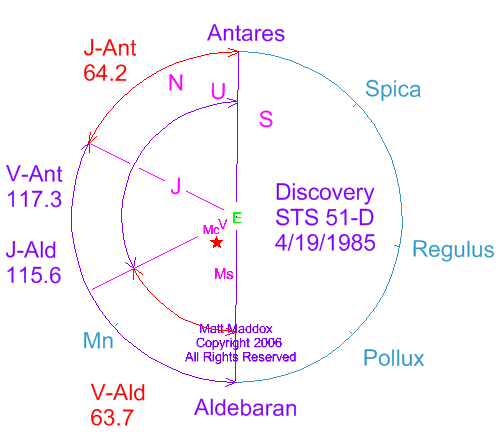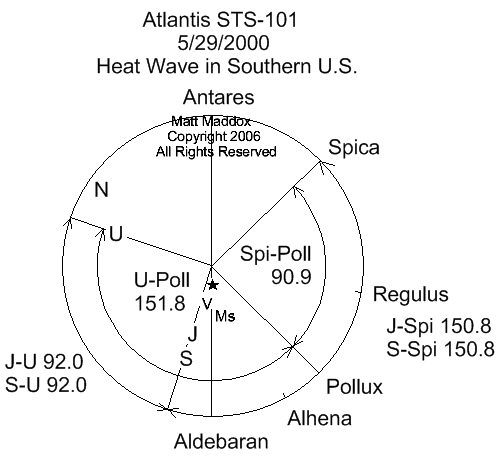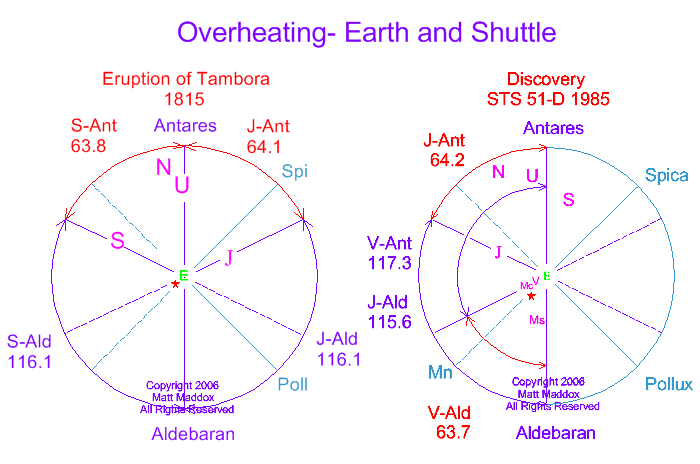| Spacecraft |
|
Uploaded 2022-10-04 Note the vector offset of Mars opposite Venus relative to the Sun. The Sun is part of a broad axis which includes Jupiter and Saturn. This overall pattern set up the conditions leading to static electricity which affected the spacecraft immediately after splashdown.
nasa photo - shuttle landing - nasa does not endorse private websites
endeavour re-entry overheat - august 21, 2007 ecliptic tilt view with symmetry shown outside ecliptic plane hurricane dean over yucatan peninsula the earth sets up axes with three powerful units about 120 degrees apart in this 3-dimensional presentation: 1) achernar - an energetic star 2) deneb - another energy producer and 3) the combination of sun, saturn and regulus. regulus is another extremely powerful star relatively close to the earth. this symmetric combination is superimposed and simultaneous with the ecliptic (sun-earth plane) 80/100 degree pattern shown below.
intrasite links tropical storms tornadoes solar system
climate/el nino/la nina nuclear power outage/aviation accidents earthquakes/clear air turbulence
endeavour re-entry overheat - august 21, 2007 bird's eye view of ecliptic or sun-earth plane most of the solar system bodies are contained in this 80/100 degree ecliptic diagram! the ideal of 80/100 degrees for the diagram is based on the angular separation of regulus with the backbone of antares-aldebaran. see the k pattern under ecliptic/volcanoes. on a long-term basis regulus is 80.1 degrees from aldebaran and 99.9 degrees from antares - powerhouses within the sun-earth plane. this date includes endeavour's "hotter-than-normal-rentry (1)" and hurricane dean's unwelcome visit to the yucatan peninsula. note the four axes in this "peace-symbol-like" pattern: 1) uranus, 2) mars-aldebaran, 3) moon-jupiter-antares and 4) sun-saturn-regulus! the net effect is that gravitational microshear is set up and the shuttle undergoes turbulence in space before it ever hits anything classically called weather. the normally smooth laminar or layer flow is exchanged for turbulent flow and results in hotter than normal temperatures on the shuttle surface.
(1) brian williams - nbc special report 12:35 pm edt, august 21, 2007 coverage of the endeavour's return from space
columbia 3 - dimensional symmetry ecliptic tilt view
columbia - bird's eye view of the ecliptic plane view from north looking south with this accident, the numbers come up very close to the same as <<jupiter, at almost exactly 1.5 revolutions around the sun, is almost exactly at a point opposite in the sky compared to 1985! (see above) >> in fact, the j-e-mn-sun-n line sets up a 3-dimensional symmetry, just as the 1985 discovery pattern did.
columbia - ecliptic side view in this view, the j-e-mn-sun-n subpattern of the previous diagram is tilted to show a side view of the ecliptic. although not shown, aldebaran has been tilted toward the front of the diagram and antares tilted toward the back. the same angular separations of approximately 64 and 116 degrees appear when the j-e-mn-sun-n alignment is measured with respect to achernar and deneb- two very energetic nearby stars!
shuttle re-entry overheating planet-star patterns are associated with and appear to cause various solar system events. it is postulated that these patterns indirectly affect the upper atmosphere- the region where spacecraft re-enter.
moon-star subpattern and shuttle overheat
discovery july 17, 2006 re-entry overheat <<discovery sts-121 was predicted to be at risk for
re-entry overheat during the july 15-17 predictive window. this
at-risk situation was predicted on the "predictions 2006" page of this website.
it came down with scorch marks on the sides which are normally white.>>
<<the position of jupiter for the 2003 columbia loss was only one degree different compared to that of saturn for this episode of overheating!!!>> the three-dimensional symmetry points definitely
have an effect on re-entry conditions.
discovery 1985 with this overheating incident (1), both venus and jupiter are at points in the sky which can set up 3-dimensional symmetry. this symmetric pattern is set up with the stars aldebaran and antares in the ecliptic plane, and also achernar (alpha eridani) and deneb (alpha cygni). all these stars are potent energy-producers. (1)“lurking land mines endanger shuttle,” kelly, john and halvorson, todd,
florida today
columbia 1995 prior to 2003, the 1995 columbia mission was recorded as “the hottest entry” on record (1). note the incredible overall symmetry shown with this composite diagram!
atlantis 2000 in may of 2000, there was a heat wave in the southern us. atlantis returned from space at the end of the month. it went up with a small defect in the wing (1) and this defect allowed hot plasma gas to flow past the protective tiles on re-entry. although the heat wave was at the earth’s surface, the planet-star pattern associated with the heat wave may have exacerbated a situation which would have occurred anyway- overheating of the shuttle wing. the various planet-star patterns associated with shuttle overheating may point to the concept of heat waves in the upper atmosphere. (1) “earlier shuttle flight had gas enter wing on return,” schwartz, john and wald, matthew, the new york times, july 9, 2003
volcano and shuttle overheat comparison in these diagrams, the earth-star and earth-planet lines have been continued or extrapolated through earth. note the similarity of pattern even though planetary positions are different. apparently, some astronomical combinations result in agitation in the crust and cause volcanoes. other combinations cause agitation in the atmosphere.
|
copyright 2007 astrosymm
all rights resrved

